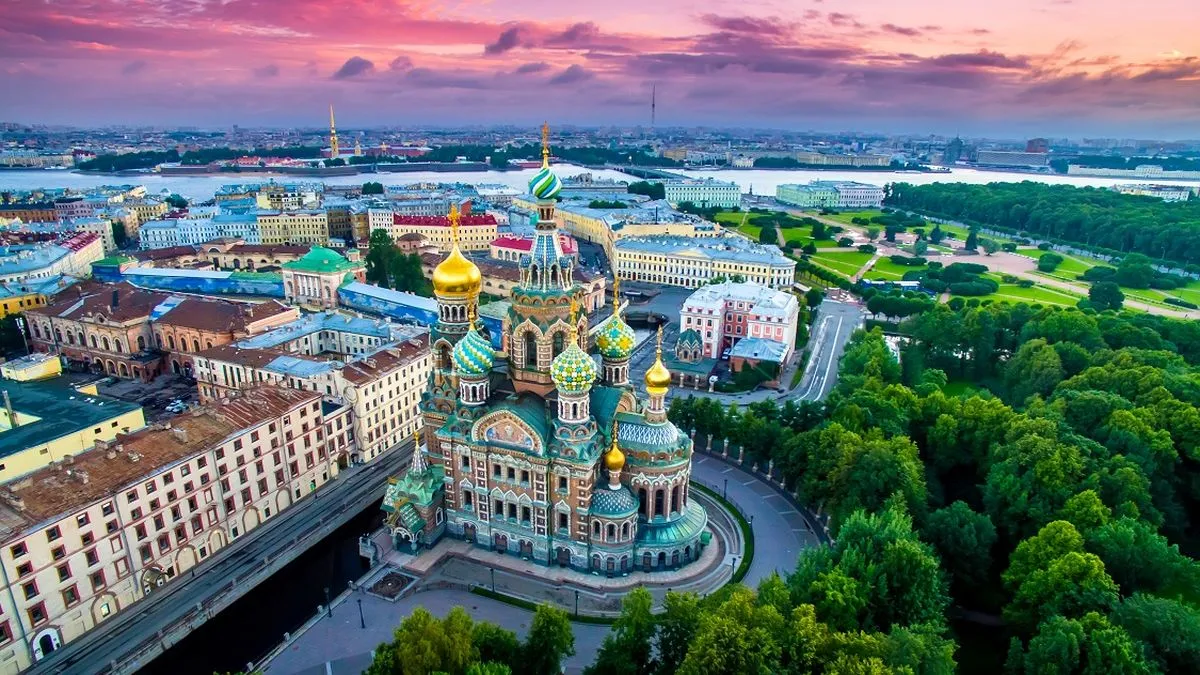An Essential Guide to St. Petersburg
Friday 1 April 2022

Situated on the Baltic Sea, St Petersburg is an impressive Russian port city. Its ornate architecture, grand museums and UNESCO World Heritage status make St Petersburg Russia’s cultural capital.
While holidaymakers might not immediately feel drawn to the city, St Petersburg has so much to offer the discerning traveller. Forming part of a Northern Europe cruise holiday, your stopover in this lavishly-built city should be treasured, as it provides a unique opportunity to experience an entirely new culture, and see some of the world’s finest buildings.
Where is St. Petersburg?
St. Petersburg is located in extreme northwestern Russia and situated on the Gulf of Finland in the Baltic Sea, between Finland and Estonia. The Neva River also runs through the city, and it has many canals and waterways throughout its streets.
What was St. Petersburg Called?
St. Petersburg is actually the third name the city has fallen under since it was founded. Initially, it was called Sankt-Pieter-Burch, an early iteration of St. Petersburg, by the then-Tsar Peter the Great, and was named after the apostle Saint Peter. This was later standardised as Sankt-Peterburg due to German influence.
Then, when World War I erupted, the Imperial government renamed the city Petrograd as a way to purge the name of any Germanic influence. However, this new name lasted just short of a decade before another change was to come as Vladimir Lenin, the first and founding head of the Soviet Union, died. A new title, Leningrad, meaning Lenin’s City, was fostered after Lenin’s death in tribute.
When did Leningrad become St. Petersburg?
Leningrad then remained the city’s name until 1991, when a referendum called to return the city to its original name - Sankt-Peterburg, or as it’s known in western countries, Saint Petersburg. This referendum fell in with the first Russian presidential election after the fall of the Soviet Union and looked to offer a new chapter in the city’s history.

What to do in St. Petersburg on a cruise stopover
Hermitage Museum
As the city’s most popular attraction and one of the world’s largest art museums, a visit to The Hermitage Museum is highly recommended. With over three million items in its collection, those with an interest in art, history and culture can be entertained for hours. In fact, it’s fairly easy to get drawn into the museum for an entire day, if you’re not careful - it’s estimated that you would need 11 years to view each exhibit at The Hermitage Museum for just one minute! This can be why it can be useful to get a guided tour.
The unmistakable green, white and gold façade of the Winter Palace, the building which hosts the museum, is in itself a work of art. Nestled beside the Neva River, this world-famous museum holds the private collection of Empress Catherine the Great, who commanded Russian ambassadors to scour the globe to find the finest artworks. Art aficionados will find a Renaissance collection featuring works by Cezanne and Monet, as well as 20th-century painters such as Picasso, Matisse and Kandinsky and a collection of Russian artworks by more local artists.

Church of the Saviour on Spilled Blood
One of St Petersburg’s most iconic buildings was built in memory of Alexander II, who was the Emperor of Russia from 1855 to his assassination in 1881. The Church of the Saviour on Spilled Blood stands in the very place where a bomb was thrown into the emperor’s carriage, by a man who opposed the Tsar’s policies. Alexander II is considered to have been one of Russia’s greatest tsars, responsible for the emancipation of serfs, which was essentially the slavery of Russian peasants.
The grand church, with its ornate façade, is often compared to St Basil’s Cathedral in Moscow. Its uniquely colourful exterior makes it stand out against most of St Petersburg’s uniformed architecture. The church took 24 years to build and remains one of the largest mosaic collections in Europe.
Nevsky Prospekt
It’s difficult to miss the Nevsky Prospekt during your Baltic cruise including St. Petersburg. This is the city’s main avenue and one of the country’s best-known streets. Cutting through the cultural heart of St Petersburg, the Nevsky Prospekt passes historic buildings, squares and bridges, giving you a flavour of the city. Look out for the Kazan Cathedral, which was inspired by St Peter’s Basilica in Rome, and was designed to be the country’s main Orthodox Church. The Church of the Saviour on Spilled Blood is located on this avenue and you can also find Palace Square and the Hermitage Museum here.
Udelnaya Flea Market
If you’re seeking vintage Russian items such as old ornaments, furniture or clothes, stop by Udelnaya Flea Market. Sellers arrive in the cold, early hours to set up their stalls. A mix of young people looking to make some extra cash and older people clearing out their homes can be spotted placing their wares out on tables and blankets for sale. For those of you seeking unique souvenirs, Udelnaya Flea Market is Russia’s biggest flea market, so there’s plenty to browse. The market opens on weekends.

Faberge Museum
See the world’s largest collection of Faberge eggs during your stopover in St Petersburg. Set in the 18th century Shuvalolv Palace, the Faberge Museum holds the very first egg that artist Peter Carl Faberge created in 1855. These jewelled imperial eggs were made for the Russian tsars Alexander II and Nichols II as Easter gifts for their wives and mothers. The House of Faberge, led by Peter Carl Faberge, is believed to have created 65 eggs in total. Of these, only 57 have survived to the present day. A total of 9 are housed in St. Petersburg today.
Peterhof Palace
Some 30 miles from the city’s cruise terminal, Peterhof Palace is well worth an afternoon excursion if you have the time. The beautiful gardens and parkland surrounding the palace represent almost two centuries of European aristocratic fashion, leading visitors through the ages via ornate sculptures and landscaped grounds. Peterhof Palace’s gardens are so spectacular, they have often been dubbed the Russian Versailles.
Peter the Great, who is credited with the creation of St Petersburg itself, was also responsible for the construction of Peterhof Palace. He began construction of the palace, known as the Monsplaisir ‘my pleasure’ Palace, based on his own sketches. Over the years, the palace continued to evolve, with ornate fountains and fine details added to elaborate the already splendid building.
READ MORE: Must-visit Tsarist Palaces in St. Petersburg
St Issac’s Cathedral
St Isaac Cathedral is St Petersburg’s largest Russian Orthodox cathedral. Dedicated to Saint Isaac of Dalmatia, a patron saint of Peter the Great, the church is built in neoclassical style. Sculptures and impressive granite columns form the exterior, while the interior is adorned with mosaic icons, paintings, and a beautiful stained-glass window of the ‘Resurrected Christ’, which sits in the main altar.
What to do in St. Petersburg on a cruise stopover
Hermitage Museum
Church of the Saviour on Spilled Blood
Nevsky Prospekt
Udelnaya Flea Market
Faberge Museum
Peterhof Palace
St Issac’s Cathedral
The complex and luxurious city has plenty to offer travellers, from grand palaces to illustrious cathedrals. With a sometimes-turbulent history and unique culture, those visiting on a Nordic Treasures cruise holiday get to experience the city’s story first-hand.
For more tips, guides, and advice, make sure to visit our blog page.


